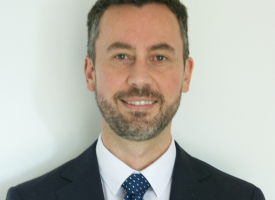Dr Omar Khorshid - AMA Informed Financial Consent Guide
Transcript: AMA President, Dr Omar Khorshid, 6PR, Mornings with Gareth Parker, Tuesday, 22 September 2020
Subject: AMA Informed Financial Consent Guide
GARETH PARKER: And what about this - your out-of-pocket expenses when you visit a doctor or a specialist. I said earlier with Steve and Bas that when you buy a - and I don't want to make the comparison overly flippant because they're fairly different things, but I think the principle's worth distilling – when you shop for a fridge or perhaps a motor vehicle, you have the ability to compare outlets, get quotes, look at advertised prices and then make an informed decision, and that's what most of us do.
When it comes to medical care, that option is still there available to you, but it's not really the way that we think about things. We tend to be referred to a specialist by our GP. We sit down with that specialist and we talk in great detail about the medical care that's provided and, at that point, you are emotionally committed to the course of treatment, and any discussions about what it actually might cost - and what it might cost depending on your specific insurance circumstances - are often a second or a third order issue, if in fact they are discussed at all.
The AMA have put together a document that's about trying to ensure more disclosure, more discussion, more declaration, and a whole bunch of new specialties have now signed up to this code. Dr Omar Khorshid is the President of the AMA. Omar, good morning.
OMAR KHORSHID: Good morning, Gareth.
GARETH PARKER: Thank you for your time. That little analogy about shopping around for fridges versus shopping around for doctors, it's not a perfect analogy, but do you understand, or do you agree with the point that I'm making there, or disagree?
OMAR KHORSHID: I agree with it, and it's because our medical system is so complex and, in particular, our private health insurance product, while very good at underpinning one of the best health systems in the world, it is, by definition, quite complex. And individual doctors can't disclose their fee. Well, the majority of them that actually sign up to no-gap products and things with insurance, they can't disclose their fee because they don't have one. Those fees are actually set by the insurers, and it's really difficult to communicate that to an individual patient.
GARETH PARKER: So, if you are a patient, what's the advice?
OMAR KHORSHID: So, our advice is make sure you have that conversation with the doctor or with the practice, possibly even before you attend, to understand what that practice’s billing policies are, and whether that's in the ballpark of what you're interested in. But even if you've already been through that consult with the doctor, you must have that conversation about what are my likely fees going to be, and not just from that doctor but actually from the whole episode of care…
GARETH PARKER: Right.
OMAR KHORSHID: …because you can get gaps from your insurer themselves through an excess payment, for pharmaceuticals, for radiology. There's lots of small gaps, but when you add them up, they can become quite significant, and it's really important that people understand what they're up for before they enter that course of treatment.
GARETH PARKER: So how many conversations might you need to have? Like, if you're going into hospital for a procedure, is there one person who should be able to explain all of those financial implications to you?
OMAR KHORSHID: It is tricky because no one individual has the information, but this guide that we've put out and that's now been signed up to by 28 other medical organisations is an attempt to give the individual patient as much information as possible on the potential for out-of-pocket costs. And that's right across the course of treatment, not just from that individual doctor, but of course that individual doctor has no control of what others bill, and doesn't necessarily know what the insurer will pay.
So, it is a difficult question to answer, but this is our attempt to give patients the most information we can and to really inject some transparency into the equation. And, at the end of the day, it's really important the patients also understand that they do have a choice. And if a fee estimate from a doctor is out of reach, we know there are many, many other doctors out there whose fees may well be within range, may be no-gap or with a small gap. And the data from the regulator shows that, in fact, over 90 per cent of medical services in the country are provided without any gap at all.
GARETH PARKER: And I've had this conversation with experts on cancer care on the program in the past, and I presume it's the same for other specialties, but they actually say: look, there's no strong evidence or in fact there's no evidence that more expensive treatment equals better treatment. In fact, there appears to be no real correlation between the quality of care and the cost of care when it comes to out-of-pocket costs.
OMAR KHORSHID: We would agree with that statement. We don't believe that a more expensive medical service means a better medical service, and being private businesses, individual doctors will decide their own fee schedules and - depending on the structure of their business - what they need to charge. But then, they need to be able to justify that to the individual patient, and that justification should not be around you getting better care than you'll get elsewhere because there's absolutely no evidence that that's the case.
GARETH PARKER: Might the story be different if I'm insured with insurance company A and James over here is insured with insurance company B and we both go to you for a procedure? Might your arrangement with my insurer be different to the arrangement you have with James' insurer?
OMAR KHORSHID: Yes. That is absolutely the case, unfortunately. We have many different insurers throughout the country, they've all got different fee schedules, and they vary very significantly. The AMA, within the next short while, is putting out our annual Private Health Insurance Report Card, which tries to inject some science into the comparison between the insurers and what your experience may be as a client of that insurer when it comes to claim time. There are good insurers who pay doctors well and actually pay a large proportion of their overall premiums back to patients in rebates, and there are other insurers that pay a lower proportion of what they receive out. And surprise, surprise, they tend to be the for-profit insurers that are taking more out of the system than the not-for-profit insurers.
GARETH PARKER: I'd be interested to hear from you listeners, 922-11-882, about out-of-pocket costs. If you've had a surgery or some other procedure or some other course of treatment, tell me about the experience. Did you get bill shock? Were you surprised about the bills? Were you perhaps the reverse of bill shock - you were expecting something and at the end of the day you get the invoice from the hospital or the insurance says: it's all taken care of? Experiences, good and bad, we'll take either way.
The informed financial consent guide that you're talking about, Dr Omar Khorshid, can you just explain what exactly it is? What form does it take? What information does it provide for people?
OMAR KHORSHID: So, it's got a couple of parts to it. The first is a campaign. So there's some posters and brochures that are available, that doctors can put in their surgeries to help patients understand what questions they should be asking. And then there's a template form that practices can either use or can modify a little bit to help remind the practice of what sort of information the patient needs to understand the full breadth of costs - not just that doctor’s estimate of fees, but what are the other categories of fee that you might expect the patients to see a gap in. Are they going to have, for instance, an x-ray as part of the course of care? Could there be a gap there? Are they going to need pathology testing? Are they likely to receive pharmaceuticals? Is there an anaesthetist involved? And how do they find out the fees from the anaesthetists?
So, those sorts of categories are all there in the form, and it's then for the patient and the doctor both to sign, or the practice to sign, to say: we acknowledge that this information's been shared. This is the estimate. And it gives the patient confidence about what's going to happen and avoiding that bill shock.
GARETH PARKER: Yeah. So, would you advise patients to go through that checklist each time they're about to embark on a course of treatment?
OMAR KHORSHID: We strongly believe, and we have done for a long time, that patients must be informed about the cost of their treatment, just as they're informed about the risks and benefits of their treatment, and the best way to do that is to have a formally documented estimate that the patients receive and be able to think about before agreeing to. What we've given with this tool is just a way to do that, to facilitate it, and to make sure that doctors are thinking about not just their own fees but all the fees. And that's really the change here.
GARETH PARKER: Omar, thank you. I appreciate your time.
OMAR KHORSHID: Good morning, Gareth. Cheers.
GARETH PARKER: Dr Omar Khorshid, the President of the AMA.
22 September 2020
CONTACT: Maria Hawthorne 02 6270 5478 / 0427 209 753
Follow the AMA Media on Twitter: http://twitter.com/ama_media
Follow the AMA President on Twitter: http://twitter.com/amapresident
Like the AMA on Facebook https://www.facebook.com/AustralianMedicalAssociation



